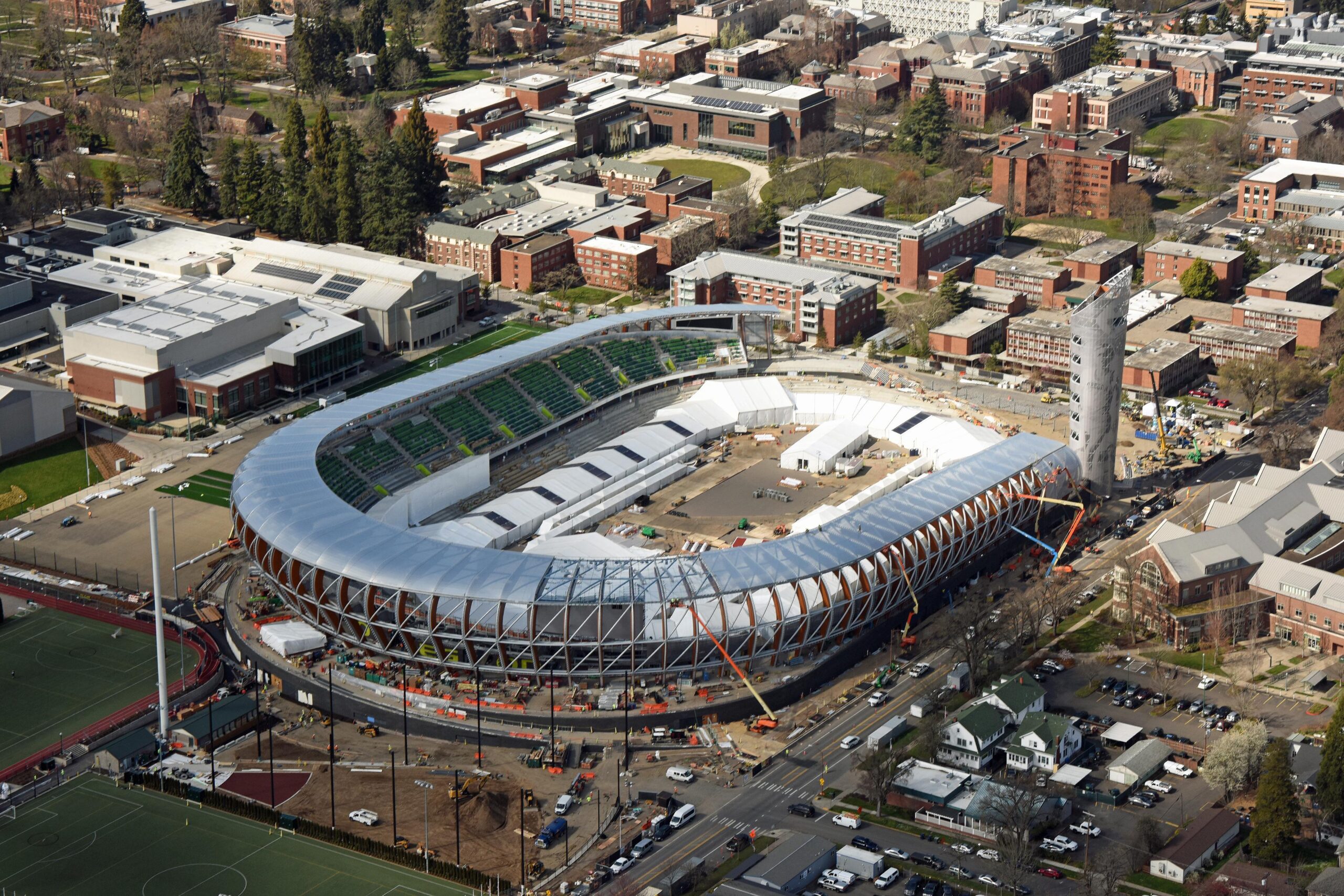


University of Oregon, Hayward Field Renovation
In 2018, the University of Oregon in partnership with Nike and 50 other donors announced that the Historic Hayward Field would be demolished to make room for the redeveloped Hayward Field stadium. Together, UO and Nike announced that the state-of-the-art facility would bring much needed seismic and safety updates to the track and field stadium, while also increasing seating capacity and adding amenities that would elevate the stadium to the likes of a professional venue. The reimagined Hayward Field provides University of Oregon athletes with a modernized experience, and the ultimate fan experience – comfortable seats, amenities, sight lines, and one-of-a-kind viewing intimacy with athletes. The redeveloped Hayward Field is now home to a soaring wood structure; 12,650 seats (and the capacity to expand to 25,000); a 12-story tower that features exhibits, an observation deck, and training staircase; Hayward Hall – a museum honoring past coaches and athletes; a home to the Department of Human Physiology; modern men’s and women’s locker rooms; an equipment and weight room; indoor practice area; and a new nine-lane track. This project created many learning initiatives for the construction and engineering communities, the unique foundation system was designed due to challenging subsurface conditions at the site. The project location posed significant challenges, which the team has solved through rigorous design using subsurface investigations and engineering analyses to limit the future risk of excessive settlements on site, and to create an economical foundation system. Hayward Field has already been reserved to host the 2022 World Athletic Championships, indicating that this track and field theater will be a popular venue for future athletic events.
From the start, the leadership team and project design team knew this was not going to be a typical design project. Hayward Field was designed and constructed with the Historic Hayward Field in mind. The project team wanted to honor the past, while also moving toward a more seismically sound and safe stadium. The stadium was not redeveloped without challenges though. Subsurface conditions at the site posed a challenge when the project team was tasked with designing a foundation system that worked with varying bedrock and overlying soils; unique pavement engineering needs at Powell Plaza; and the importance of improving safety, seismic performance, and ADA compliance.
Now complete, Hayward Field has greatly benefited Eugene’s local community, the stadium bringing potential increases in AirBnB rentals, hotel stays, and profit to local shops and restaurants. Pieces of the Historic Hayward Field can be found in several locations throughout Eugene, allowing visitors to visit several places to pay homage to the historic stadium.
Location: Eugene, Oregon
Owner: University of Oregon
Market Sector: Development
Services: Geotechnical Engineering, Pavement Engineering

